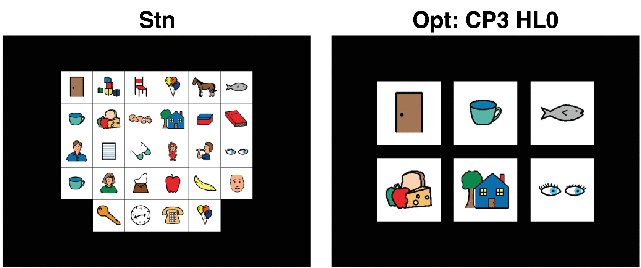
Excess involuntary movements and slowness of movement in children with dyskinetic cerebral palsy often result in the inability to properly interact with augmentative and alternative communication (AAC) devices. This significantly limits communication. It is, therefore, essential to know how to adjust the device layout in order to maximize each child’s rate of communication. The aim of this paper was to develop a mathematical model to estimate the information rate in children with dyskinetic cerebral palsy and to determine the optimal AAC layout for a touchscreen tablet that results in enhanced speed of communication. The model predicts information rate based on button size, number, spacing between buttons, and the probability of making an error or missing target buttons. Estimation of the information rate confirmed our hypothesis of lower channel capacity in children with dyskinetic cerebral palsy compared with age-matched healthy children. Information rate increased when the AAC layout was customized based on the optimal parameters predicted by the model. In conclusion, this paper quantifies the effect of motor impairments on communication with assistive communication devices and shows that communication performance can be improved by optimally matching the parameters of the AAC touchscreen device to the abilities of the child.

